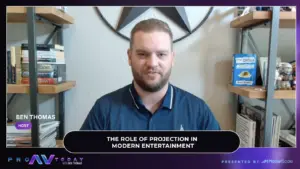LEDTalk: Domestic or International? A Buyer’s Guide to LED, with Jon Lewis of PixelFLEX
The LED industry is currently a $5 billion worldwide industry, with the Americas region recently crossing the $1 billion mark. With this much money being invested into displays, how does that relate to higher quality and increased price points? Are we still buying things from China, or is it possible to manufacture these components in the United States? How do we find the right balance, both in terms of getting the components we need at the correct quality, while still meeting the customer’s needs and price points?
On today’s LEDTalk, we sit down with Jon Lewis, director of operations for PixelFLEX, for a discussion about the LED industry as a whole. To Lewis, this is a “good time to be in LED” because of increased quality options; it is no longer “the wild wild west” of LED where people were figuring things out just a few years ago.
For starters, Lewis points out that although higher density pixel pitch products are more available and stable, they are not for everyone.
“If you’re trying to put church worship lyrics on a 16 foot screen, and the audience is 45 feet away, you don’t need a 1.5 resolution at 4K,” Lewis said.
He compares display overkill to sitting at the front row of an IMAX theatre, it just gets to a point where peripheral vision is unusable. It is just too much.
Lewis points out that by triangulating the client’s needs (screen size, how far away the audience is, and the type of content) on the first phone call, a lot of those issues can be stopped. He also addresses the Chinese marketplaces, specifically sites like AliBaba, and the difference between ordering from U.S.-based versus Chinese companies.
At the end of the day, “97 percent of components are produced in China”, so most of the time people are receiving Chinese components, which can lead to communication problems, as well as time zone issues when it comes to warranty repairs.
Lewis speaks more about the cultural difference, as well as his recent trip to China, and some compliance issues as well, all on today’s LEDTalk.
Follow PixelFLEX on social media for more LEDTalk!
Twitter – @pixelflexled
Facebook – facebook.com/PixelFlexUSA
LinkedIn – linkedin.com/company/pixelflex







